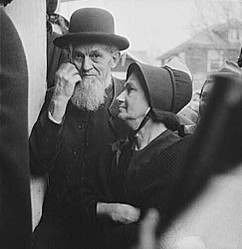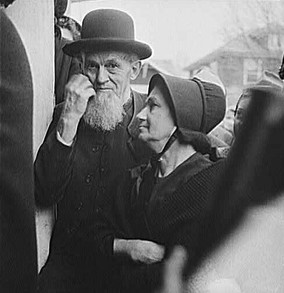The Mennonite church has been in existence for over 500 years, dating from the Protestant reformation in the 1500’s, and having its roots in the Protestant and Catholic religions of that era. The church has grown from that 1500s beginning to a worldwide presence. In fact, according to Mennonite Church USA, they have "over 109, 000 members in 44 states." (1)

Mennonite Beliefs
Mennonite beliefs are what set this group apart from other segments of the Anabaptist denomination. Here's a snapshot of their major beliefs and practices.
What Do Mennonites Believe
Note: This is a brief overview of some major Mennonite beliefs and not an all-inclusive, exhaustive study.
In general, Mennonites believe:
- Mennonites believe in a process of salvation that starts with an adult learning about Jesus, repenting of their sins, confessing their belief in Jesus, and being baptized.
- Believing that baptism is voluntary act, which was in opposition to the Reformation movement belief of involuntary (infant) baptism, led to a schism with the reformers.
- To Mennonites, the Bible is their final authority, and they believe it to be the inspired word of God.
- They believe any believer who is empowered by the Holy Spirit can interpret the scriptures.
- Because God and the Bible are their authority, their loyalty is to God, rather than any government, nation, or military organization.
- Belief in a separation of church and state is a key belief, and one of the reasons the Anabaptists split off from the Reformation movement, which adhered to the belief in a government organized and governed church.
- Mennonites believe Jesus is the reconciliation between God and sinful man.
- They feel believers should exhibit the fruit of the Holy Spirit in their daily activities.
- Other central beliefs of the Mennonites are community, peace and love, pacifism, and economic sharing.
Mennonite Church Ordinances
All Mennonites observe:
- Baptism of adult believers
- Church discipline
- Ordination
- The Lord’s Supper
Additionally, many Mennonites observe the rituals of foot washing and the Holy Kiss.
The Relationship Between Anabaptists and Mennonites
Anabaptists, or rebaptizers, as they were called in the Reformation period, disagreed with the common practice of infant baptism, as they felt infants could not:
- Understand sin
- Repent of it
- Believe in Christ
- Live in obedience to the Scriptures
They believed that only adults could go through the process of salvation and be baptized, and they base their belief on Matthew 28:19-20.
Menno Simons, a Catholic priest who converted to the Anabaptist movement, became the leader of the Anabaptists. His followers were called Menists and later Mennonites. All Mennonites are Anabaptists, but not all Anabaptists are Mennonites. For instance, Hutterites are Anabaptists but are not Mennonites.
The early Mennonite church in America consisted of two branches: the Amish under the governance of Jacob Amman, and the Old Mennonites. While many people believe the Amish and the Mennonites are the same religion, they are not.
Amish hold to strict beliefs and practices concerning separation from society, church discipline, dress codes, and the Ban. Mennonites adhere to a less strict form of governance with no restrictions on clothing.
This brief overview of Mennonite beliefs has only scratched the surface of the interesting facets and practices of this Anabaptist Christian denomination. If you would like in-depth information on this religion, the website for the Mennonite Church USA is a good place to start.
Resources
(1) - Undisclosed author, "About Us," Mennonite Church USA
Gingerich, Ken, “Who are the Mennonites,” Third Way Café,
You might also like
Who was JesusTo understand Jesus you must realize that he was a mystery that theology trie...
Ministry in the church:women bishopsThe long awaited decision to have women bishops is major progress.








 Healthy Whole Wheat Oatmeal Pancakes Recipeon 05/16/2012
Healthy Whole Wheat Oatmeal Pancakes Recipeon 05/16/2012
 Spaghetti Sauce Recipeon 05/15/2012
Spaghetti Sauce Recipeon 05/15/2012
 Banana Fritters Recipeon 05/10/2012
Banana Fritters Recipeon 05/10/2012
 How to Get Rid of Fleas on Dogson 05/10/2012
How to Get Rid of Fleas on Dogson 05/10/2012



Share Your Thoughts About This Overview of Mennonite Beliefs
Thank you for commenting on this article. I'm glad it was useful :)
That's great! I never really knew the difference before! Thanks.